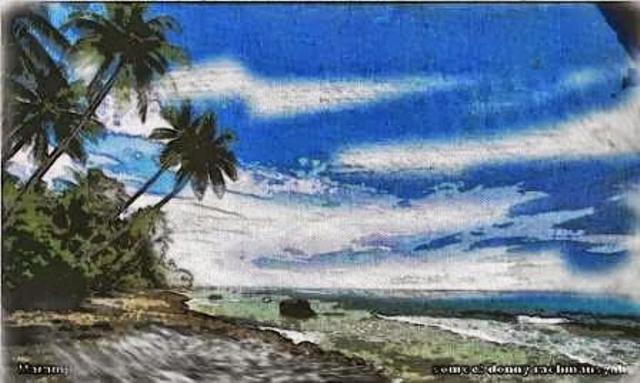Indonesia has various exotic plants, among other the Sandalwood (Santalum), called Cendana in Indonesia. It is a kind of precious tree whose fragrant wood is used as spices, incense ingredients, and aromatherapy. A good sandalwood timber can store the aroma for centuries. The timber was used for lady’s fans which fragrance spreading out throughout the surrounding. In Java, the timber was used for the sheath of a precious kris, a Javanese traditional dagger. In olden days, sandalwood was considered as one of the media to make the ambient purer which makes people closer to God.
In Indonesia, the plant grows well limited in dry places such as Timor, Pantar and Alor islands. The plant is suitable with the dry climate of those places even though people can plant it in more fertile land such as in Java. However, the wood fragrance will not as strong as the one found in those islands, the reason why there is no commercial sandalwood plantation outside those islands.
During the colonial era, due to its high commercial value, as it was also imposed to the teakwood plantation, the Dutch government issued a regulation stating that all sandalwoods became the government property, regardless they grew up in the forest, in the yard or garden of the villagers.
The people, whose yards already filled with sandalwood, had an obligation to cultivate and grow the plant and submit the products to the government. Any violation of the regulation would be sanctioned and punished. The locals, being faced with the strange and harsh regulation, cut down all sandalwoods found in their gardens, yards or even in the forest, saying that if a regulation just put them in trouble, then the source of the trouble must be exterminated.
In our surprise, the regulation was still put into effect after Indonesian independence until 1999. Realizing that the regulation was one of the main sources leading to the extermination of sandalwood, the government of Nusa Tenggara Timur gives the right to the people to plant and cultivate sandalwood in their gardens or yards through the issuance of the Regional Regulation No. 2/1999. People are glad to cultivate the plant because they can produce base oil of sandalwood, which is in its pure form, is very rare and expensive.
Sandalwood seedling which is semi-parasitic plant needs several host plants to support its early life during the cultivation. In its early cultivation period, the tree needs three kinds of host plants. Purslane (Althernantera sp), a local plant species called krokot, is best suited as a primary host when the sandalwood saplings were in nurseries.

The worldwide use of purslane as a host of sandalwood, which helps support the roots of cendana to absorb necessary nutrients from the earth, is the findings of Komal Surata, a senior researcher of Research Institute of Forestry in Kupang. When its height passes the krokot plant, cendana needs the support of turi (Sebasnia grandiflora) or acacia ( Acacia villosa) for the protection from direct sun rays. In the last term, the johar (Casuarina junghunniana) is required to help the plant grow well. In a time when the plant has grown up big enough, the topsoil must be dry enough otherwise the tree can be very fertile but has no fragrance.
Before this discovery, many seedlings died during the cultivation because local people did not know the importance of host plants. Today after the support of the experts from Bogor Agricultural Institute (IPB), and the Seed Technology Centre (BPTH) in Denpasar in close collaboration with several international agencies, the locals in East Nusa Tenggara know better how to cultivate and conserve genetic resources of this species.
Sandalwood with good quality is now saleable at the price of around Rp100,000 (US$ 10) per kilogram. The points of export are Kupang and Merauke which the main destinations are Taiwan, Hongkong and the Middle East where the price soars up four times. The Kupang and Merauke local governments each gets an export annual quota of 1,500 tons either in the form of logs or added-value products.
Any new company who want to become the sandalwood exporters must meet the requirement to cultivate sandalwood plasma which the capacity of producing at least 20 tons of logs per year which is difficult to realize.










